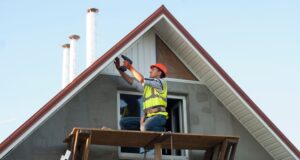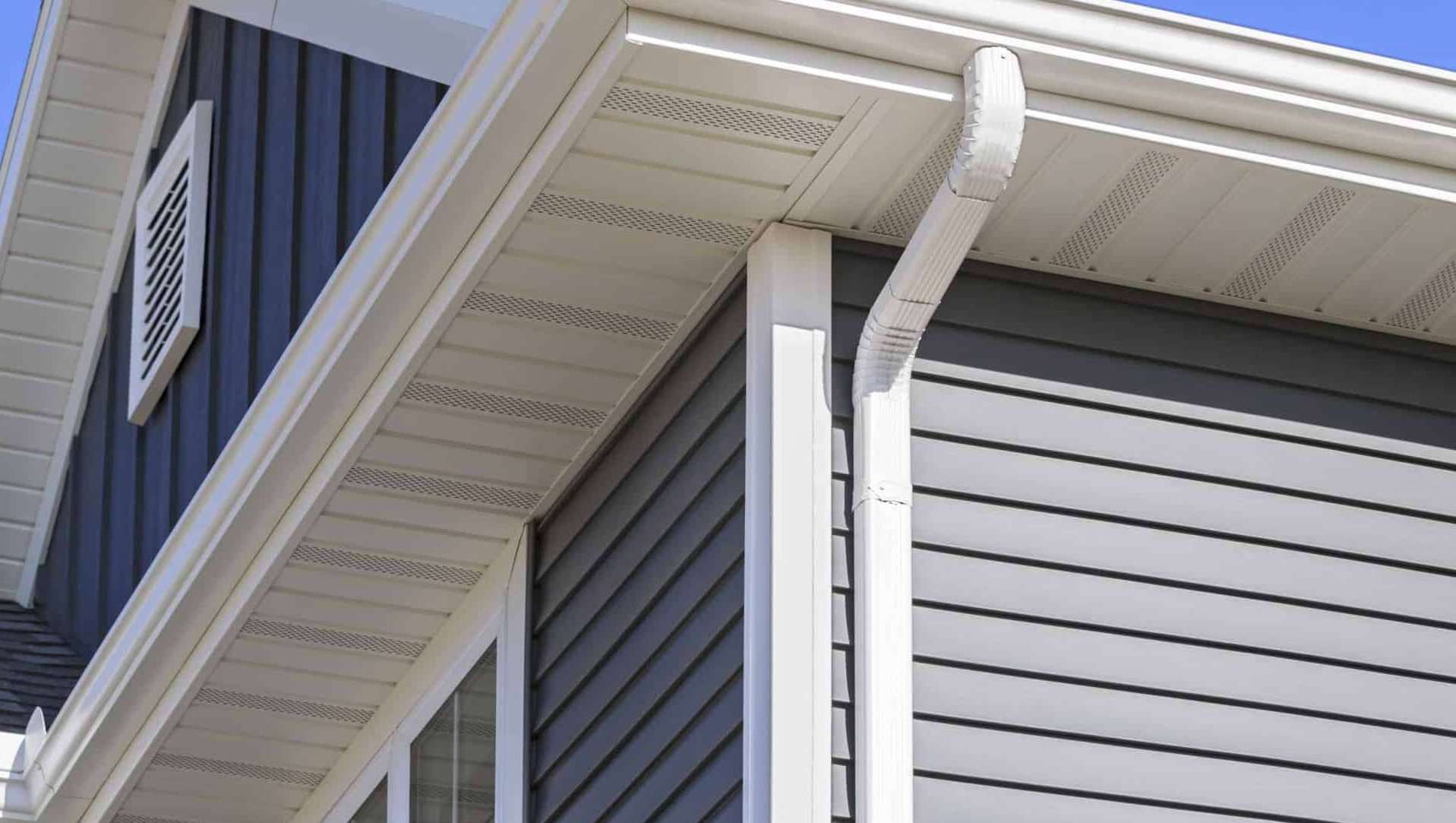Table of Contents:
- What Is Soffit?
- What is the Fascia?
- Recognize the Soffit and Fascia Materials
- Consider a Good Installation
- Examining the Fascia and Soffit
- Repair and Replacement of Fascia and Soffit
What Is Soffit?
Soffit comes from the French for “shaped like a ceiling” and the Latin for “to fasten underneath.” The term soffit refers to the horizontal underside of an archway, a stairway, or a ceiling, but it is most often used to refer to an exposed surface underneath the hanging part of a roof eave.
One of the soffit’s functions is to aid with attic ventilation. Typically, the soffit is simple with tiny perforations for air circulation, and the soffit air cycles to the vents, removing heat and moisture from home. This is critical since attic moisture may promote decay in the sheathing and rafters.
Vinyl is the most often used material for soffits because it resists deterioration caused by heat and moisture exposure. This is particularly critical since the soffit may readily get exposed to moisture due to untidy gutters and damp weather conditions.
What is the Fascia?
The fascia is a vertical finishing edge that connects the gutter to the roof; however, it may also be attached to the rafters or trusses. The fascia’s principal function serves as a barrier between the roof’s edge and the outside, preventing water damage to the wooden board.
Apart from its practical purpose, the fascia serves a critical aesthetic role by contributing to the roof’s edge’s smoother, more equal look. Along with preventing water damage to the wooden board, the fascia protects the whole roof and the inside of the house from weather damage by preventing water from entering the residence. While most houses have a fascia board, some older housing types do not.
Recognize the Soffit and Fascia Materials
Historically, fascia and soffit were primarily constructed of wood or metal. However, as more adaptable synthetics and composite materials like vinyl and UPVC gain popularity, more homeowners are increasingly choosing these materials. These materials are more durable and low-maintenance than more conventional materials. Additionally, they appeal to homeowners due to their affordability. Vinyl fascia and soffit trim are simple to match your house’s design since they are available in various colours and styles. Certain types of vinyl soffits include a wood grain look. Others are smooth or beaded, providing homeowners with more options when choosing a design to match their property. A further advantage of current soffit and fascia building materials is that several manufacturers have begun making items from recycled materials. This eco-friendly choice is popular with many contemporary households.
Consider a Good Installation
How your soffit and fascia are installed is critical since improper installation might result in significant difficulties. You should have a trained contractor install and waterproof these things. Another strategy to protect your property from damage caused by water and other potentially dangerous factors is to have a trustworthy provider install flashing and rain gutters around the roof. When these operations are not completed properly, water may escape under siding and into vulnerable places, causing damage, rotting, mould, and mildew concerns.
One duty that should always be on a homeowner’s to-do list is gutter cleaning and inspection for any problems. It is not a pleasurable job, but it is necessary.
Examining the Fascia and Soffit
Often, storms cause property damage. Rain may blow up under the eaves of a house during strong winds. The soffit is critical in these cases because it prevents rain from reaching rafters and roof boards. A damaged or neglected soffit may cause water to gather in these locations, resulting in further costly repairs.
Numerous homeowners clean their gutters twice a year, in the spring and autumn. This is a great opportunity to do a thorough visual check of the soffit and fascia to look for weather damage, flaking or other symptoms of wear and tear. If you come across any wasp, hornet, or bee nests during your examination, eradicate them immediately or hire an exterminator to do it for you. Additionally, homeowners often discover mould or mildew growing outside their soffit and fascia. Mix a solution of bleach and water and scrub the surface with a soft brush to eliminate these chemicals.
Repair and Replacement of Fascia and Soffit
Assure that all materials are sealed, caulked, and painted according to their composition. Conducting these inspections at least once a year is one method for a homeowner to stay current on appropriate fascia and soffit upkeep. When it’s time to replace your soffit and fascia, the cost will vary based on the size of your property, the building material you pick, and the extent of any further damage. In most situations, soffit replacement costs between $20 and $30 per linear foot, while fascia installation costs between $15 and $25 per linear foot. However, the expenditure is well worth it when considering these materials’ critical function in defending your property.



